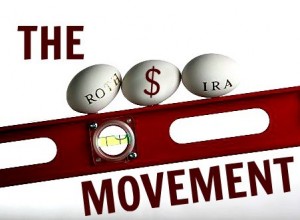11 Unusual Roth IRA Strategies
I converted funds to my first Roth IRA back in 1998, the first year they were available. Since then, I’ve not only made additional Roth IRA contributions, but found fun and exciting ways to use my Roth IRAs for even more powerful strategies.
Most readers know the basics of Roth IRAs (contribute after tax money and withdraw tax free in retirement), but it’s some of the additional, unusual strategies that you can use the Roth IRA for that make it an even better tool for wealth building.

source: Jeff Rose on Pinterest
Unusual Roth IRA Strategies
- Contribute more than the limits allow. When I was working, I discovered a great Strategy to Contribute More Than Roth IRA Limit Allows by making additional after tax contributions to my 401k, withdrawing the contributions, and then converting to a Roth IRA. The strategy allows you to convert additional money to your Roth IRA beyond the current Roth IRA limits.
- Avoid taxes on Roth IRA conversions. Avoid the pro-rata treatment of Roth IRA conversions by moving deductible IRA funds into your 401k first. What’s left is your non deductible IRA funds to make a Roth IRA Conversion Tax Free.
- Minimize taxes on Roth IRA conversions. If you are converting taxable IRA money, you can follow the Roth Conversion Strategy to Minimize Taxes by creating multiple Roth IRAs, converting, investing each in a different asset classes, then recharacterizing the conversions that went south. You’ll avoid paying taxes on money you lost, without having to recharacterize the entire conversion, allowing you to keep the conversions on the winners!
- Use a Roth IRA to smooth income and pay less tax. Roth IRAs are a great tool to smooth your income between years and pay lower overall taxes by moving tax deferred accounts to Roth IRAs in low tax years and going the opposite direction in high tax years. I put together an example in the Unconventional Roth IRA Strategy to Lower Tax Bill.
- Use the Roth as an emergency fund. A Roth IRA can be used as an emergency fund. Jill asks Should You Use a Roth IRA as an Emergency Fund? and lays out the pros and cons.
- Use a Roth 401k to get an employer match. The good news is that the popularity of the Roth IRA didn’t stop there. It expanded to the workplace where many employees can now take advantage of a Roth 401k. This is good news for those of you who wanted to fund a Roth IRA, but didn’t want to do so at the expense of losing an employer match, or you want to fund both a Roth 401k and a Roth IRA at the same time. Now you can get the best of both worlds. However, the Roth 401k isn’t for everyone, check out the arguments in To Roth 401k or Not to Roth 401k?
- Tap your Roth IRA early. You can tap the Roth IRA early, which is great news for early retirees, since it provides a lot of flexibility. Since you can withdraw your contributions at any time tax free it provides a lot of options in retirement planning. Here is How to Make Early Roth IRA Withdrawals to avoid early distribution penalties.
- You don’t have to make RMDs during your lifetime. Another layer of flexibility for retirees is RMDs. Since Roth IRAs don’t have required minimum distributions, you can keep the money growing tax free as long as you want, while you are alive. However, RMDs do kick in after you die; inherited Roth IRAs are subject to RMDs.
- Make partial Roth IRA conversions. Like many benefits of the Roth IRA, there is also a lot of flexibility with the conversions. When determining if you Should Do a Roth Conversion, one of the options to consider is that you can convert the full amount or just a partial amount of your IRA in any year. That opens up the ability to “fill up your tax bracket” with conversions to take advantage of low tax brackets. If your income is higher than expected you can always Reverse Your Roth IRA Conversion.
- Give your kids a Roth IRA. Open a Roth IRA for your Kids. There is no minimum age, as soon as your child has taxable earned income you can contribute to a Roth IRA for them. Investment income doesn’t qualify though. To say that I can’t wait to open a Roth IRA for my kids is an understatement!
- Track your Roth IRA. And finally, How to Track Your Roth IRA Contributions… and Why You Need To! To execute any of these strategies, you’ll need great Roth IRA records, and it is up to you to keep them for yourself.
This article is part of the Roth IRA Movement designed to educate people about the benefits of a Roth IRA. Don’t forget you have until the tax deadline to make a Roth IRA contribution for 2011!
What are your favorite Roth IRA strategies?




